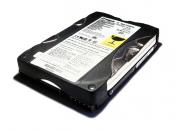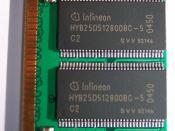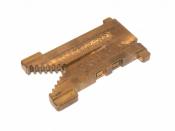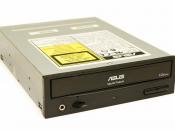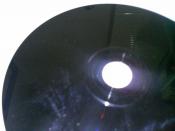Input, Output, Storage Media and PerformanceInformation is only as good as the data from which it is derived from. Incorrect or faulty data will wreak havoc if not identified promptly. Operators must ensure that the data being entered for evaluation is accurate and complete. This paper will discuss preferred methods of data entry derived from multiple sources. This paper will also discuss different ways of outputting data, whether through physical or visual means, for a few common uses of data in the business environment. Lastly, the use of different storage mediums and different computer performance characteristics will be discussed.
Data is the basic building block of information. In and of itself, data is meaningless until it is analyzed with other data points. The accuracy of data input for analysis is critical. There are right and wrong ways of entering data accurately. Suggested data entry methods for printed questionnaires, telephone surveys, bank checks, retail tags and long documents are discussed below.
Printed questionnaires come in many forms ÃÂ handwritten and bubble forms being the most popular. Scanning the questionnaire and utilizing optical character recognition (OCR) software is an alternative solution. OCR software analyzes the light and dark areas of the scanned image in order to identify each alphabetic letter and numeric digit (PC Magazine, 2009)Input of data from telephone surveys is best accomplished with the use of an integrated voice system that recognizes the touch tone responses. The downfall of this method is that human interaction is difficult when assistance is needed. In addition, this system would not work with rotary dial phones.
The best input method for bank checks would be magnetic ink character recognition (MICR). MICR is a magnetic scanning input device that magnetizes the numbers at the bottom of the check. This system reads the numbers at the bottom of the checks and will automatically make adjustments to the proper accounts. This method allows banks to process large amounts of checks quickly and accurately.
The best input method for retail tags would be a bar code scanner. Bar code scanners are optical scanning devices that recognize the bar code pattern on merchandise and enter the data directly into the system. The bar codes have specific codes that apply to certain types of merchandise.Long documents would best be processed with a computer scanner so that the information on the document can be copied exactly and stored easily on the computer for reading or printing.
Data output is also important as the input method used. The best method of output varies dependent upon the product. Below, methods of output for hand held computers, color photographs, resumes, memorandums, statistical reports and company annual reports are discussed.
Screens are the most common output method for handhelds, and they vary widely in size, resolution, and readability. The most common type of screen used by hand held computer is the LCD screen. LCD screens offer high quality video display in a small form factor and require less electrical power to operate, extending the battery life of the hand held computer.
The best output for color photographs would be a high-resolution CRT monitor and a plotter. For viewing the image on a computer the CRT would provide the best resolution over a flat. The image would look its best on one of these monitors. For printing a plotter would provide the best quality.
The best output for a resume would be a laser desktop printer. The reason for this is because most of the time resumes are created at home and printed from there. Many people do not have access to the printers found at out jobs. In addition the laser produces the best quality of document and a resume is an important document.
The best output for memorandum would be an email. Memorandums are typically short in length and require quick action. Email is able to disseminate the memorandum to the intended audience quickly.
A dot matrix printer would be the best input selection for statistical reports. Because statistical reports tend to long this printer would do a fine job and also not cost a lot of money. In the absence of a dot matrix printer, most laser jet printers will suffice.
The best output for a company annual report will also be a high volume printer. Because a company needs to make multiple copies and many people this printer would do the best job.
Storage mediums come in different forms, each having their unique area of use. Below, the use of hard disks, floppy disks, random access memory (RAM), compact disk read only memory (CD-ROM) devices, magnetic tape and flash drives are discussed.
Hard disks have faster data access rate and are of high capacity. They are useful in areas where it is required to frequently read and write data to a secondary storage device like desktop PC's, Notebooks, palm pilots, servers, UNIX systems etc.
A floppy disk is a standard 3.5 inch removable storage medium capable of holding 1.4 megabytes of data. Floppies are generally used to transfer data between computers that are not networked. With the advent of flash drives floppy drives are being phased out and is no longer delivered as standard equipment on new computer purchases.
RAM is the working memory of a computer. It is temporary memory which the computer uses to run applications and temporarily store data currently in use by the application. However, RAM is volatile and all data is lost when the computer is powered down. The more RAM a computer has available, the more data a computer can manipulate, increasing the computerÃÂs speed.
CD ROM (Compact Disk read-only Memory) can store and read massive amounts of information (650 MB) on a removable disk. Unlike the data on hard drives and diskettes, data on CD-ROM's can only be read but not altered by the user.
Magnetic Tape is inexpensive and relatively stable secondary storage medium. Large volumes of information can be stored sequentially by means of magnetized and non-magnetized spots on tape. Tapes can be used as a secondary storage device where large amount of data has to be backed up. Our company uses tapes to backup databases, shared network drives and server hard disk backups.
Flash drives have established themselves as the replacement of floppy drives. Flash drives are suitable for transferring files or temporary storage of data. The downfall of flash drives is that viruses are easily spread with their use.
Computer performance is often measured by how fast it executes commands and applications. Below, the impact of RAM, clock speed, data on hard disk, data on CD-ROM and data on floppy disks to computer speed is discussed.
As previously noted, RAM provides the work area for applications to load and operate from. When applications require more memory than available in RAM, data is temporarily stored on the hard disk which slows down performance because the application has to access data on the hard disk. A standard practice to increase performance is to increase the amount of RAM but this method has it limitations.
ÃÂIn a computer, clock speed refers to the number of pulses per second generated by an oscillator that sets the tempo for the processorÃÂ (Clock speed, 2001). Most computers are capable of executing one calculation per pulse. Increasing the clock speed will increase the speed at which the computer operates.
Accessing data on storage media, whether it is on the hard disk, CD-ROM, or floppy disk, will slow down any system. The computer is limited by the access and bus rates for the path of those pieces of hardware. The more data that is needed from these storage mediums the slower the system will run. In addition, a hard disk with little free space left adversely computer speed because less virtual memory is made available to applications.
ReferencesOptical character Recognition (2009). PC Magazine Encyclopedia. Retrieved October 18, 2009, from http://www.pcmag.com/encyclopedia_term/0,2542,t=OCR&i=48267,00.asp.
What is MICR? (2009). Elfring Fonts. Retrieved October 18, 2009, from http://www.elfring.com/what.htm.
Clock speed (2001, May 29). Mid-market CIO. Retrieved October 18, 2009, from http://searchcio-midmarket.techtarget.com/sDefinition/0,,sid183_gci211799,00.html.
